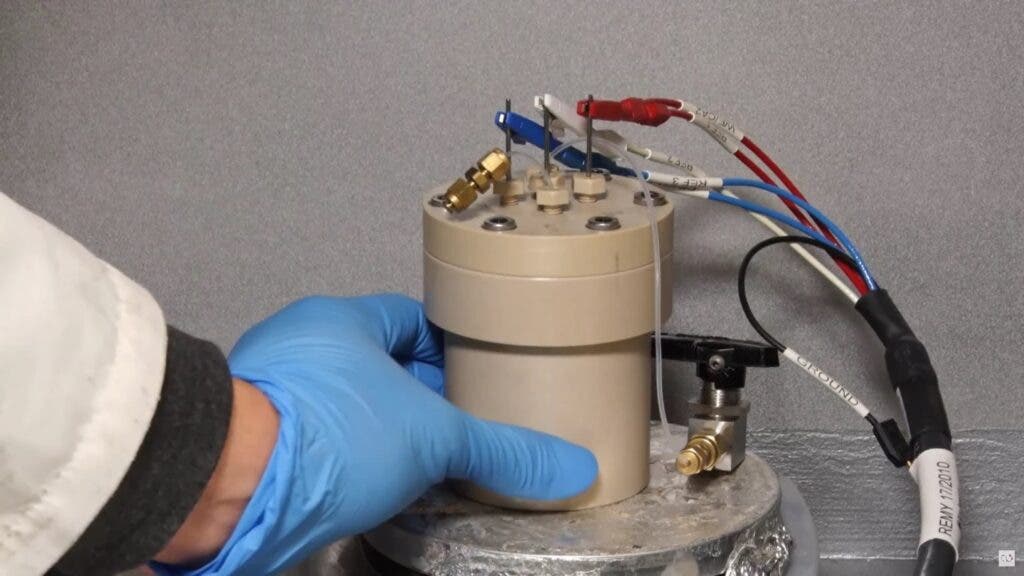
About 50% of the world’s food production relies on ammonia fertilizer, an important source of nitrogen that is essential for plant growth. In some fields, it is not uncommon to see 90 kg (200 pounds) of ammonia per acre for each growing season. Elsewhere, ammonia is a valuable ingredient used to make pharmaceuticals, plastics, textiles, explosives, and much more. In other words, ammonia provides an essential service to modern society. There’s just one problem: ammonia production is hugely taxing on the environment, being responsible for about 2% of the global CO2 output. Its carbon footprint is equivalent to all the greenhouse gas emissions released by South Africa.
But that may change since scientists at Monash University in Australia have devised a novel ‘green’ production method for ammonia. To make ammonia today, industrial plants employ what’s known as the Haber-Bosch cycle, during which methane gas is refined to produce hydrogen, which reacts with nitrogen from the atmosphere to synthesize ammonia. In the process, about six tons of carbon dioxide is released for every 1.1 tons of hydrogen.
Besides releasing copious amounts of carbon dioxide that warms the atmosphere, industrial-scale ammonia production also causes nitrate pollution as a byproduct, which often ends up in rivers and groundwater.
The alternative ammonia production method developed at Monash came about while the researchers were focused on an entirely different goal. During the grim 2020 COVID lockdown, researchers Alexandr Simonov and Bryan Suryanto working at the lab of Chemistry professor Doug MacFarlane wanted to make bleach from saltwater using electrolysis — the process of using electricity to split water into hydrogen and oxygen.
This environmentally-friendly bleach could be used to disinfect hospital surfaces while the byproduct alkaline solution is great for handwashing, being kinder to the skin than regular soap. But in the process, the scientists realized that the phosphonium salts they were working with could be precursor chemicals for making ammonia.
Much to their amazement, the researchers were able to “produce ammonia at room temperature, at high, practical rates and efficiency.” No methane – or any kind of fossil fuel for that matter – was involved in the green ammonia synthesis, which can be powered by electricity from renewable energy sources.

This is not the first time that ammonia has been produced from green sources, but the previous effort only yielded small amounts, not enough to be commercially viable at least. In fact, when Suryanto shared the results of the experiments with his colleagues, everyone was dumbfounded.
When Suryanto shared the results of the experiments with his colleagues, everyone was dumbfounded by the excellent output.
“To be honest, the eureka moment was not really ‘Eureka!’, it was more like, ‘Are you sure? I think you need to do that again,’” Professor MacFarlane said in a statement.
“It takes a long time to really believe it. I don’t know that we’ve yet really had a proper celebration. The launch of our spin-out company will possibly be the time that we genuinely celebrate all of this.”
The Monash researchers are currently working with a local company called Jupiter Ionics to bring their ammonia manufacturing method to market.
“The technology opens a broad range of possibilities for future scale-up to very large production facilities for export, attached to dedicated solar and wind farms,” Professor MacFarlane says.
Unlike the huge behemoth industrial plants required to produce ammonia at scale with the Haber-Bosch technique, the new method can produce green ammonia at much smaller plants.
“You don’t need a huge chemical engineering setup. They can be as small as a thick iPad, and that could make a small amount of ammonia continuously to run a commercial greenhouse or hydroponics setup, for example,” Professor MacFarlane said.
“It means that the distributed production of fertilizers becomes possible because the ammonia manufacturing unit is so small and simply constructed,” he added.
Ammonia is obviously coveted in agriculture, but it can also just well double as fuel in transportation. A lot of attention is given to fuel cells that use hydrogen to power vehicles, but ammonia is safer because it’s less combustible and it’s much easier to store than the lightest molecule in the universe that has a tendency to easily escape from tanks. Ammonia’s biggest downside, though, is that it is an important source of nitrogen oxides that is extremely harmful to our health.
The new findings appeared in the journal Science.









